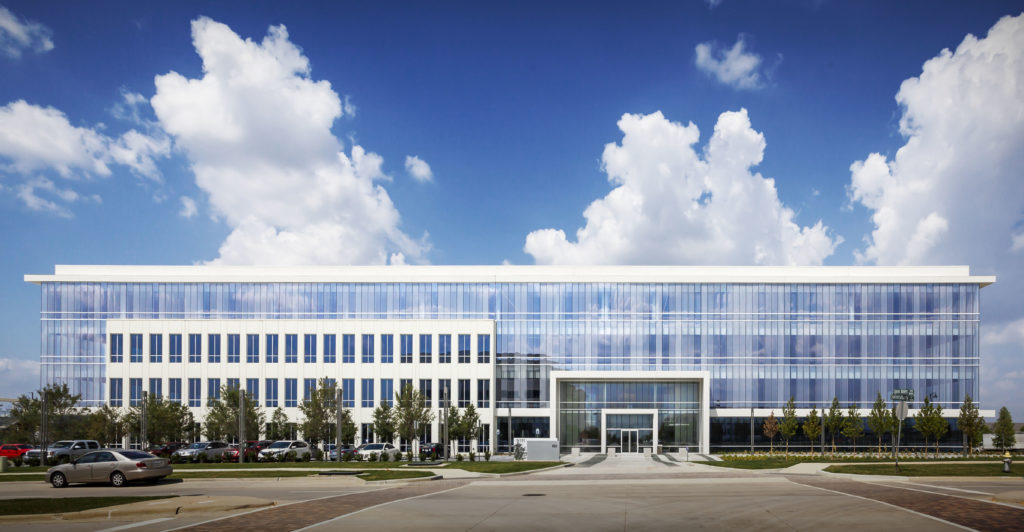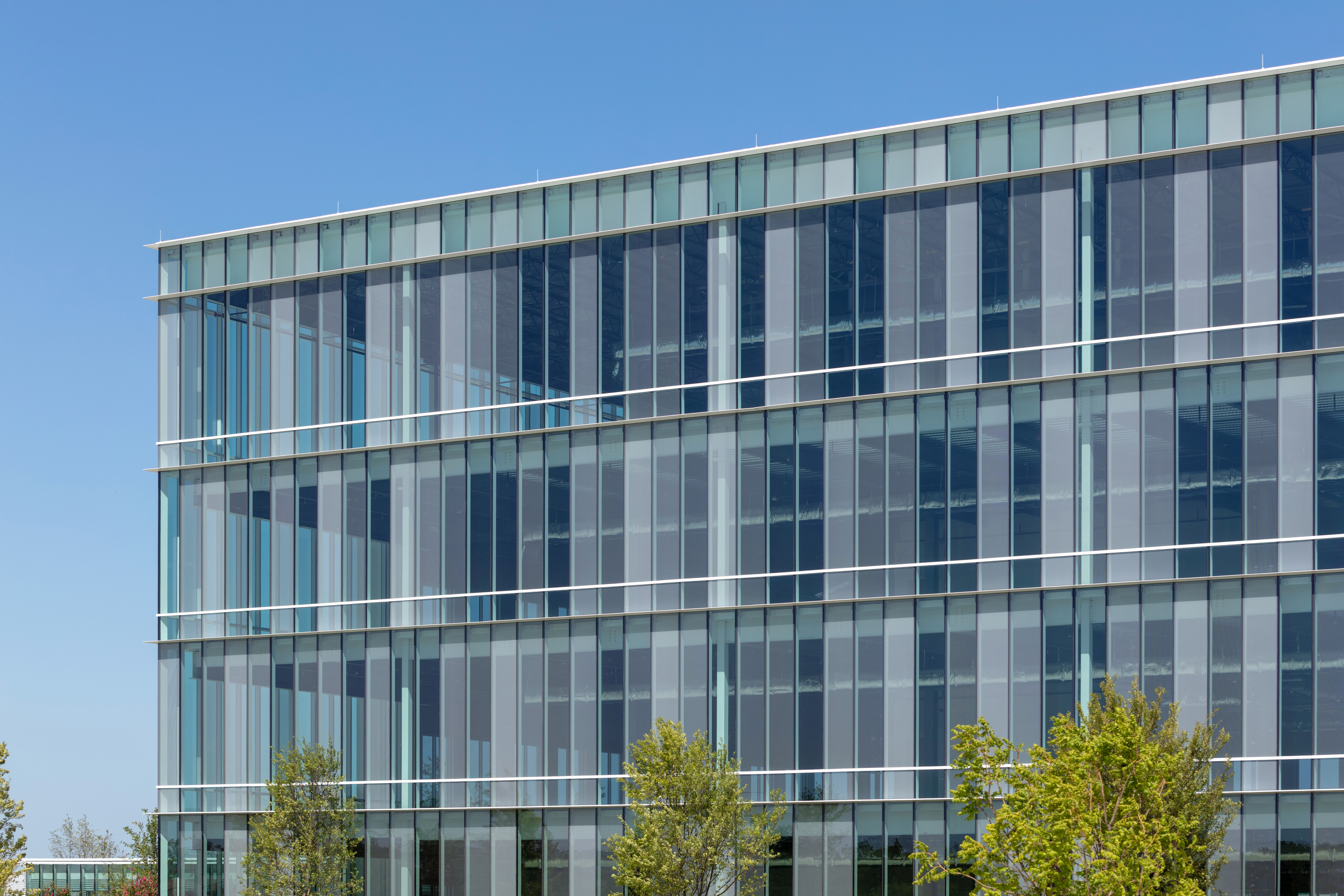Developers typically find that one of the most expensive components of a ground up construction is the glazing systems. Natural light gives life to a building. Without it there’s no life and no demand for space. Insulated glazing was invented in 1865, and the technology slowly started to make its way into commercial development in the 1930’s, becoming commonly available in the 50’s. Glass has a major impact on the experiential quality of a space and is often a primary component of the overall design concept. Glass technology has shaped and repeatedly redefined architecture, and its most recent evolution offers a broad spectrum of options.
Today’s exterior glass is most commonly a 1” clear insulated vision unit, with low-e or other coatings, with an assortment of tints offering variable performance. Typically, a glass surface is expected to be homogeneous with no variation. In the 70’s and 80’s, the use of highly reflective and highly tinted glass façades as a stylistic trend was prevalent. Since then cities have been trying to recover from the impersonal, unwelcoming buildings that lack transparency.
There are many forces pulling the selection of glass for a project in different directions…energy codes, glare, comfort, reflectivity, bird friendly design, and of course the client’s preferences. We’re going to discuss the current technology so developers are asking the right questions when discussing glass options with their designers.
In addition to low-iron, clear and tinted glass, there are low-e coatings that can be applied to different surfaces and even multiple surfaces. Frit technology is a practical application that has been lingering in the background since the beginning of time. It has traditionally been used for spandrel glass in non-vision sections of storefront and curtainwall. Over the past few years frit has no longer been relegated to performing as a backdrop. It is being applied to vision areas and becoming a key element of the building design. The implications of how designers use frits are quite impactful and can not only articulate the facade but appreciably improve performance in multiple ways.
There are many ways to block solar radiation. Exterior shading systems are best known and can be quite efficient because they prevent heat from infiltrating the envelope. However, the use of frit patterns can be a cost-effective alternative to control heat gain. The pattern will function as a veil, and the performance improvements will vary in response to the pattern configuration and density. Are you looking to blur away the joints between the glass panels or create controlled views out of a building? Or perhaps you want to protect the contents of a space from direct sunlight without the use of window treatments. A printed pattern can break up reflection, reduce the “hardness” of the glass, and make a surface highly articulated without the use of a double skin.
Frit can either be silk screened or digitally printed. In the silk screen process, ceramic frit paint is applied to one side of the glass, and then heated in a tempering furnace to create a permanent coating. In digital ceramic printing, ceramic ink is applied directly onto the glass, in much the same way that an inkjet printer prints onto paper, before the ceramic frit designs are fused onto the surface during the tempering process. Silk screening has certain limitations; it is most efficient when the same pattern is used repetitively and when it’s used on standard size glass as opposed to oversized units. Though there are initial set-up costs, digital printing allows greater flexibility. Set-up costs have come down substantially as the technology has become more mainstream. Digital printing doesn’t benefit from repetition, so the sky is the limit when it comes to pattern and colors.
When thinking about using frit it is critical to remember that adding a white or light color to the surface of the glass will increase reflectivity. Whether it is a pattern or a solid or frosted band, reflectivity can quickly escalate several percentage points. After recent concerns in the Dallas Arts district with reflectivity and unintended consequences, many jurisdictions have become paranoid and added or adjusted existing zoning regulations to limit its percentage. Some have lowered the maximum allowable to as low as 20%, which can be very hard to achieve and will limit options when looking for high-performance glass that is not tinted or dark. Use of a tinted substrate or a reflective coating can notably diffuse or diminish the graphic effect and legibility of a frit pattern. Allocating enough time in the schedule for multiple rounds of mock-ups is paramount.
Frit can change the experiential qualities of a glass surface, or the structure itself. Textures and patterns can provide a particular level of transparency such as the one on the Reiss Building in London [Reiss – Squire and Partners] which shows a more granular pattern than the one we designed for International Business Park in Plano.

